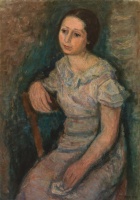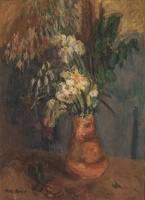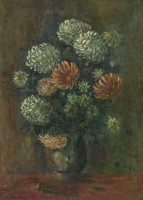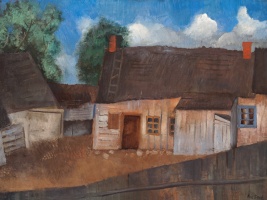
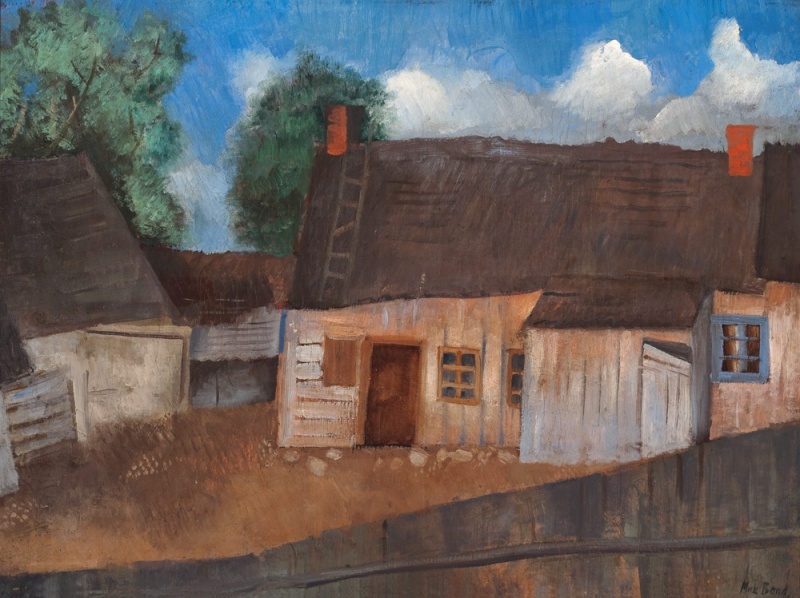
Homestead
| Author: |
Max Band (1900–1974)  |
| Created: | 1920s–1930s |
| Material: | canvas |
| Technique: | oil |
| Dimensions: | 46 × 61 cm |
| Signature: | bottom right: Max Band |
The shtetl. Until the end of the 18th century, most East European Jews lived in towns. In 1791, Catherine II banned Jews from living in the main cities of the Russian Empire, and ordered them to move to the western provinces (Lithuania, Belarus and western Ukraine), thus creating the Pale of Settlement. Unable to fit into the towns in this zone (about a million Jews lived in the Pale of Settlement in 1800, and by 1900 their number was almost five million), Jews were forced to move to villages. Mass migration to the villages created a new unique living space, the shtetl (in Yiddish shtot, meaning ‘town’, shtetl, ‘small town’). The number of Jews in the shtetl often exceeded the local population. A typical structure of the shtetl formed, with the market square at the centre of the town next to the church, closely surrounded by Jewish shops and workshops, and a synagogue in a side street close to the market. Life went on peacefully, consisting of family, prayer and work.
The shtetl has always featured in works by Litvak artists. Although Max Band lived in Paris from 1924 onwards, in the summers he would rent a house by the River Šešupė and paint the surroundings. Sometimes his friends Arbit Blatas, Issai Kulvianski and Antanas Gudaitis, when they were visiting Lithuania, would join him in his plein-air painting sessions. The French critic N. Frank, discussing Band’s work, emphasised that ‘despite becoming a Parisian, he still remained a resident of Marijampolė’ (1939, Review, 24:7). Images of dilapidated old farmhouses are a witness to the years Max Band and Yehuda Meyer Epstein lived in poverty in the shtetl. The melancholic shtetl atmosphere also emanates from the yellow house that Augustinas Savickas painted.
Text author Vilma Gradinskaitė
Source: Law firm Valiunas Ellex art album THE WORLD OF LANDSCAPES I (2010). Text authors Nijolė Tumėnienė, Dalia Tarandaitė, STORIES OF LITVAK ART (2023). Compiler and author Vilma GradinskaitėExpositions: “Lithuania in Litvak Arts”, 6 June – 16 November, Tolerance Centre of the Vilna Gaon State Jewish Museum (Naugarduko St. 10/2, Vilnius). Curator Vilma Gradinskaitė







